L.G. Wright and the Tangled Web of Modern American Glass
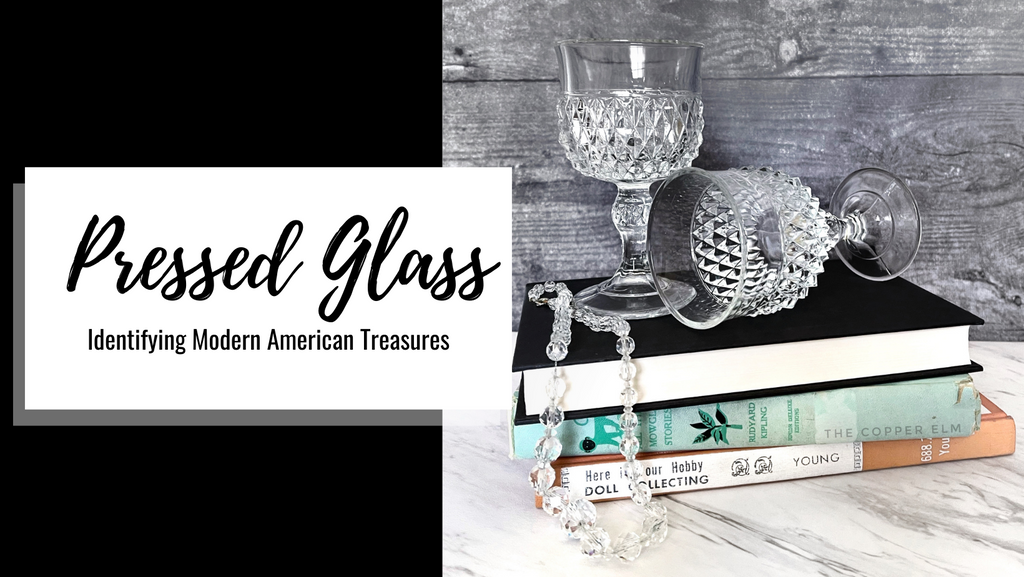
Complications in Identifying Modern American Pressed Glass
On recent treasure hunting adventures, I've found myself falling into the wild world of vintage glassware. It started with a piece that I believed to be depression glass and what was sure to be a jackpot of a find. Little did I know that identifying the beautiful, boldly colored, pressed glass would be so complicated or lead me down so many rabbit holes. What I've learned is the business of glassware in the early to mid-1900s was one filled with deception, confusion, and a whole lot of tangled webs. The industry itself could fill dozens of blog posts, evident by the countless books written on the subject, but for now, we are going to focus on one company, in particular, whose manufacturing practices make correctly identifying glassware quite the struggle.

Westmoreland candlestick holders in pink English Hobnail
L.G. Wright Glass - Reproductions and Confusion
The L.G. Wright Glass Company began in 1937 and found a great deal of success throughout much of the 20th century. That success, however, came with a good dose of controversy, because their long reputation for reasonably priced, yet well-made glassware, was gained without ever mixing or pressing a single piece of glass.
Wright hired out their production to neighboring glass companies, with many big names like Fenton, Westmoreland, and Viking manufacturing their pieces at varying times. Considering that many of their collections were produced for decades on end, those molds could change hands multiple times, producing identical pieces from various locations over the years. If your glassware has documented history and purchase information from the original owner, pieces of the puzzle are far easier to put together. But when you are picking up a stray piece of Wright glass at an estate sale, confidently knowing which factory pressed the piece and when is almost impossible.
To throw another wrench into your investigation, the majority of their pieces were made using molds with designs that were either direct reproductions/reissues or at least heavily influenced by popular, top-selling patterns from other brands. Flash forward decades later and identifying a maker becomes super frustrating when the pattern resembles that of a specific brand, but you can’t find any documentation showing that it was available in a specific-sized dish or color. Small details can throw your research into a tailspin and that is compounded when you consider how many pieces are being sold online at this very moment with production and design credit going to the wrong maker.
The complications don’t stop there, unfortunately. Wright also had a history of purchasing authentic molds from other glassmakers, often after the companies had gone out of business. Many of these molds were unmarked, or worse, had the original maker’s mark. When you combine all of these practices...you can be left with a piece of glass that has the exact design, including the maker’s marks, of a late 19th-century glass company, that was mixed and pressed by an entirely different company decades later, only to then be sold under the L.G. Wright name.
Think it couldn’t possibly get more confusing?? In 1998, L.G. Wright closed its doors, but their molds were far from abandoned. Approximately 700 L.G. Wright molds were sold at auction to a handful of buyers. Some ended up in the hands of well-known and respected companies like Fenton and Maize, to be used in conjunction with their own added branding marks to distinguish them from their Wright predecessors. But unfortunately, about 20% of the molds were purchased jointly by two reproduction wholesalers, with a known history of not adding any identifying maker’s marks to their pieces. This leads to the possibility of endless pieces of glass being produced to this very day, that to the untrained eye would be indistinguishable from not only L.G. Wright pieces, but their far more valuable Victorian predecessors as well.

Indiana Glass wine glasses in Diamond Point pattern
So, after dipping our toes into the dramatic world of pressed glass, is it hopeless to think that any piece can be authenticated? Not quite. Those 700 molds sold at auction? There is a very detailed list of every piece sold and to which buyer they went. So separating L.G. Wright pieces from current-day reproductions is not a lost cause, it just takes a bit more leg work. And going further back, separating L.G. Wright’s pieces from the makers he was “inspired” by? That often comes down to the details. There are plenty of websites documenting the differences between original pieces and their reproductions, some coming down to the tiniest details like seam placement, edge texture, or bead counts. There are also countless books detailing various glassmakers, Victorian patterns, depression glass collections, and imported reproductions so cross referencing original patterns with their authentic color options and serving dish choices can help you see when something is too good to be true.
After quickly realizing that properly identifying a piece of pressed glass requires far more research than a simple reverse image search, I’ve changed my view quite a bit. While I still think the treasure hunt is exciting and the patterns are intriguing, I’m far less likely to close down my furniture business and go full time into the glass world. When I’m deciding if a piece is worth buying, I no longer let my initial valuation be dictated by a quick scan of Etsy prices. Armed with the understanding that a large number of online resellers are basing their listings on information obtained by OTHER online resellers, without the necessary effort put into real documentation with evidence to back it up, it’s wise to enter this arena with caution. I don’t jump the gun and pay top dollar for something that I am not absolutely confident in. I’m a more savvy shopper, still enjoying the thrill of the hunt, but finding even more excitement in uncovering the story behind a piece, whether that leads me to a conclusive ID or not.

Pink crimped compote/candy dish by Ivina Glass
Steps I Use to Properly Identify a Piece of Modern American Glass
Do you have a piece of pressed glass you’d like to identify but don’t know where to even begin? Don’t stress! While I can’t promise you’ll find all the answers you’re looking for each and every time, I can share a few tips I use to put me on the right path.
Let’s take this ruffled piece as our example and head down the rabbit hole of identification, shall we?

L.G. Wright's amber beaded candle holder
Google The Obvious
First, I do a Google search with a basic description of the piece. For this one, I’d search “vintage amber glass candle holder” and include “ruffled” or “crimped” edges. Click the tab to search images and start scanning. As you find pictures of what seems to be the piece at hand or anything that strikes you as similar, jot down notes of manufacturers and any pattern names. Redo your search using those new bits of info and see if you can find more examples of your piece.
If you’re struggling to find any photos of your specific piece at all, it may help to eliminate a few details. Removing the color from your search term can help you find the same item in other, perhaps more common, colors. Similarly, removing the actual specific item itself, but leaving the design/pattern details in play, may help you find other pieces from the same collection. For our example piece, if I was hitting dead ends, I would take “amber” and “candle holder” out of the equation entirely, focusing instead on the characteristics that would be consistent across the entire collection. Searching “vintage glass with ruffles and beaded stem” will bring up an entirely different set of images, including an almost identical piece that doesn’t isn’t actually a candlestick holder at all. The collection included a compote (stemmed dessert bowl) that was identical except for the candle holder ring.

Four beaded stems of the L.G. Wright beaded candle holder
Verify the History
Once you’ve narrowed down the most likely manufacturer for your piece, the collection name, etc. it’s time to verify your work. We still need to know that this isn’t some random imported reproduction or a piece that was misidentified in an eBay description. This is where a little historical digging comes into play. Look for information about the manufacturer and the specific pieces produced in that collection. What colors did it originally come in? How many different pieces were included in total? Did they reissue the same pattern throughout various years? Are there any photos online of their original print ads? (Finding your exact piece in a photo of an old catalog is gold!)
Many pieces will bring you to your final conclusion with some simple research. Other pieces can throw you for quite the spin, leading many to give up quickly and opt to label the piece with the most commonly seen description, regardless of accuracy. In the case of the amber candlestick holder, I found online sales listings for the same piece, in various colors and various claims to history. Many proclaimed that it was an original Fenton, Northwood, or Dugan piece. Others stated L.G. Wright. And another handful claimed it was made by Fenton for Wright.
Why so much confusion? Well, that is due to the crossing paths of glassmakers. In the late 1800s, Harry Northwood founded the Northwood Glass Company. Ten years later, he hired a young man to work in their decorating department and within a year, he worked his way up to the position of Foreman. That young man was none other than Frank Fenton. Northwood had multiple factory locations including one in the town of Indiana, Pennsylvania (which was previously owned by the Indiana Glass Company). When that factory shut down in 1904, it was purchased by the Dugan Glass Company, whose founder, Thomas Dugan, was a cousin of Harry Northwood. When Northwood and Dugan went out of business years later, some of their original molds were bought by a relatively new glass company by the name of L.G. Wright. And as we discussed earlier, since Wright didn’t actually manufacture any of their own glass, they commissioned Fenton, among others, to create their collections for them. See how information could easily be misrepresented??

Beaded rows and crimped edges are key attributes to help ID
Come to Your Conclusion
So, after all this research and discovering multiple catalog photos and historical articles, my conclusion is that this amber candle holder is indeed L.G. Wright Glass, likely produced sometime in the mid-1900s. Wright used mold number 562 from the original Northwood Glass Co. to make the form for this piece, which would become product number 3-1, a part of their beaded collection. (The mold was originally used to produce Northwood’s opal open rose bowl). This particular piece is most commonly assumed to have been made for Wright by Fenton Glass, but I have not been able to verify that. Wright was known to commission small batches at a time, rotating between various glass manufacturers depending on current costs and availability. These manufacturers used the Wright molds, producing nearly identical products, so distinguishing between them in identifying Wright’s pieces is quite complicated. The crimped and ruffled edges do however strike a strong resemblance to many of Fenton's signature pieces.
L.G. Wright Glass documentation from EAPGS
Sharing these complicated histories is not meant to deter you from the thrill of solving the mystery of a piece of pressed glass. I am, however, hopeful that it will encourage you to put in the time and effort needed to do so accurately. Maybe it’s not quite worth it to invest so much energy into something that very well may not have the ability to pay you back financially. But each of these pieces, each pattern, each collection, and each manufacturer, holds stories of the past that could easily be forgotten if we don’t see its value. And that, my glass collecting friends, is priceless.
Sites I use to identify a piece of glass:
(Please click links to explore!!)
Early American Pattern Glass Society (Pattern glass index)
Kejaba Treasures (Glass patterns identification guide)
The Spruce Crafts (Depression glass patterns)
Invaluable (Identifying vintage American glassware)
Sites that helped me identify this amber piece and learn the history of L.G. Wright Glass:
(Please click links to learn more!)
Glass Encyclopedia (L.G. Wright Glass)
Real or Repro (Molds of L.G. Wright)
Herald Dispatch (L.G. Wright's unique history)
Collector's Weekly (Antique L.G. Wright Glass)
-
Posted in
Product Research, Vintage Glass
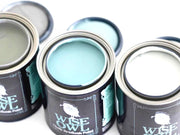
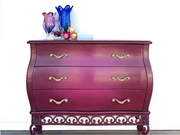
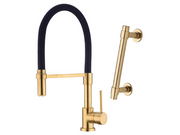
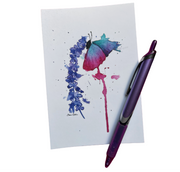



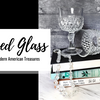
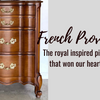

Very good job! And just so happens that following a significant auction purchase last week, I too am now “rabbit hunting” for the truth regarding two lovely "LG Wright " vases.
This article and the links are so helpful. Thank you for sharing.